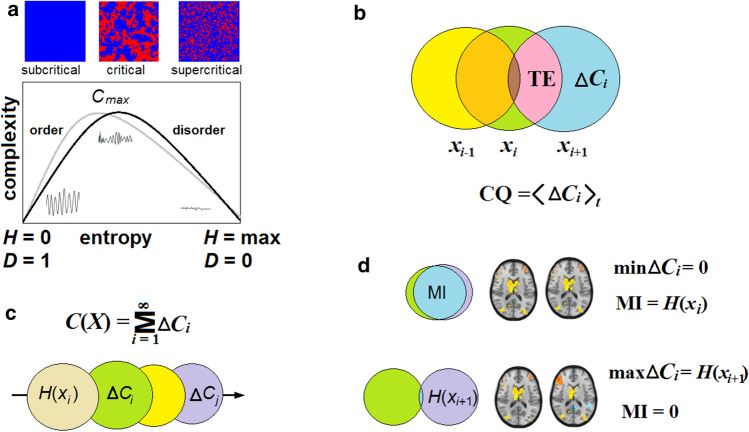Fig. 4.
Complexity measures and Cognitive evolution. a When extracted in time series of discretized measurements, and reflect a mixture of synchronization/desynchronization in brain dynamics with maximal values near criticality between subcritical and supercritical phases, presented here by the 2D Ising model (adapted from Tegmark 2015). b While TE depends on mutual information, CQ can statistically reflect how much new information the brain has gained in time. c The C(X) unfolds by formally summarizing increments ∆C over (X, <). d If , it makes brain dynamics functionally ‘crystalized’ in a subcritical regime. Conversely, makes brain dynamics chaotic in a supercritical regime, thereby causing minimal coherency of S(τ)

